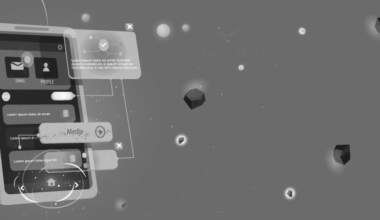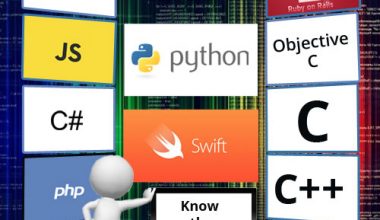
As tech advances and healthcare sector became more decentralize, organizations are transforming to mobile devices to broaden viewing efficiency. Mobile App technology has become an intrinsic part of everyday life, with most people owning smartphones, tablets, or both. This field has grown beyond traditional boundaries with the advent of new technologies, techniques and tools.
This has changed the way of living; even the way people receive health services. The mobile healthcare service app has brought new opportunities in the health services arena in terms of electronic transmission and sharing of patient health data.
They have proven to be an indispensable force behind the evolution of Healthcare from 1.0 to 3.0 by facilitating real-time communication facilities, safer payment methods, effective patient consultation, and image-seeing elements that we will discuss in this article. Perhaps the biggest question with the adoption of mobile devices in radiology is whether they offer adequate resolution to enable quality diagnostic display.
The Shift in Radiology with Mobile Apps – Its Role, Working, and Use Cases
Just like other fields, mobile applications have changed aspects of the image display of the Health Services industry. These applications, which are designed with a focus on every element of the mHealthcare mobile app development and How Mobile Apps Ruling the Health Care Industry guide, have assisted radiologists with facilitating the process of collecting, editing, analyzing, and sharing digital images anywhere and anytime.
This application has added security, comfort, and efficiency to the process. So do you want to know how? Let us look at how mobile applications work in Radiology to understand concepts in a better way.
Working of Mobile Apps in Radiology
When considering how mobile apps in the field of Radiology act, the process begins by preparing a common database for DICOM and non-DICOM images mostly in the Cloud. This database is then considered to provide services that are scalable and functional.
When a radiologist or medical doctor enters the application and requests a medical image, the server centrally requests a copy of the data from the database. This copy is then sent to the device the user is using, so it is erased after 48 hours of download. Implying, users are given the convenience to get access to their medical data instantly and the need to protect PHI (personal health information) is not ignored.
Now, when we have discussed what the role of mobile applications in Radiology is and how it works, there is a possibility you will be eager to Hire HealthCare app Development Company and discuss your application needs.
But wait!
Before you jump into the mob industry, it is worthwhile turning to the various mobile applications available to get an idea of what features and facilities can make your application a success.
Therefore, by taking the same thoughts forward, the next part of this article is about mobile applications that have shown how quickly mobile technology is helping radiologists and other practitioners in the use and sharing of health service images.
Top 6 Most Worthy Mobile Apps in Radiology
With this in mind, Health Imaging sets out to find the six best available applications that can be downloaded by radiology students, radiologists, and other medical professionals and starts using them immediately to increase knowledge and improve their practice.
-
Radiology Toolbox Pro
Downloaded nearly 70,000 times in 120 countries, this popular application offers one of the largest collections of radiology resources ever collected to help radiologists who practice and educate radiologists in training. An extensive library of critical anatomy and diagnostic guidelines brings commonly used reference material directly to users or, as a happy reviewer said, “there is no faster way to get the information you need when interpreting a study – all with touch a button.
-
Mobile MIM
Mobile MIM is the first FDA-approved diagnostic radiology application that has disrupted the world of image vision. This application offers several features and functions to radiologists, health service administrators, and patients, such as viewing real time, merging, registering, and / or exhibiting digital medical images from various modalities, such as PET, CT, X-Ray, SPECT, MRI and Ultrasound. These facilities then help create effective medical plans and provide unlimited health care services to the audience.
-
SnapView
SnapView is another iOS health service app that utilizes facilities to take non-DICOM images in departments, such as ED, Wound care, Dermatology, and Ophthalmology. Then share these images directly to Ncompass Universal Archive, without PHI left on the device.
-
Ambra Health App
Ambra Health App is another mobile application that makes a difference in the field of Radiology. This application offers medical and healthcare providers the opportunity to access current and previous digital images directly on their device. In addition, this facilitates them with the option to collaborate and communicate with doctors and other patients in a smooth and effective way.
-
Monster Anatomy Lite-Knee
Monster Anatomy Lite-Knee is also one of the best cellular applications in the world of Radiology. This application acts as an interactive lower limb radiology atlas that provides health professionals and medical students interactive and detailed information about the knee through images.
Although this mobile application will help, you clear the cloud of doubt and learn what features and facilities offered in your image display application, it is also important to pay attention to the latest technology that is making a difference in the industry.
-
iClarity Lite
iClarity Lite also appears as the best medical image display application in the field of radiology. This application helps users to receive and view images saved on clarity PAC with different iClarity Server modules installed. In addition, it gives them options such as searching and sorting, scrolling images in the multislice series, shaking the device for image resetting, and more.
So, let us uncover what and how technology is reshaping the world of Radiology.
Top Technologies Contributing in Changing Radiology
-
Artificial Intelligence
Artificial Intelligence is also proven to hold a promising future in the world of Radiology and The Role of Artificial Intelligence Technology in Healthcare is has changed everything by automating repetitive tasks, such as monitoring measurements in cancer care.
It also helps radiologists and other health care providers by creating smart and customized routes, making better decisions, increasing workflow efficiency, and therefore providing informative diagnostic content. This, overall, helps to fill the gap between the number of scans – which is increasing by 13% every year – and the number of radiologists available, which is increasing by 4% every year.
-
Internet of Things (IoT)
Another technology that interferes with the world of image vision is IoT. It provides pathologists, radiologists, and other health practitioners with assistance in reducing the challenges of lightning while reading digital images in various fields and modalities.
In addition, it integrates with Machine learning and Cloud technology to optimize workflows, estimate possible failures, collect data on standalone X-rays, Ultrasounds and CT, and allow 360 degree display of their status.
This, overall, helps radiologists and health practitioners with a more complete picture of the current state of devices and tools, and encourages them to make the right steps towards success by investing in developing IoT-based health service applications.
Final Word
Mobile applications have a significant impact on Image display and other radiological segments. This application, by entering into alliances with advanced technology, offers many opportunities to simplify and optimize the Radiology process, and provide exceptional experiences to patients – giving impetus to the idea of introducing mobile applications to your Radiology organization.
If you are looking for a Healthcare AI App Development Companies in India, US and Dubai then Fusion Informatics can be your perfect choice for collaborating, Contact our Healthcareapp Development team at [email protected] or visit our case study page to check who previously developed related applications health.
Stay connected for full features about the role of cellular applications in radiology practice in the 2020 summer edition of Radiology Health Imaging.




